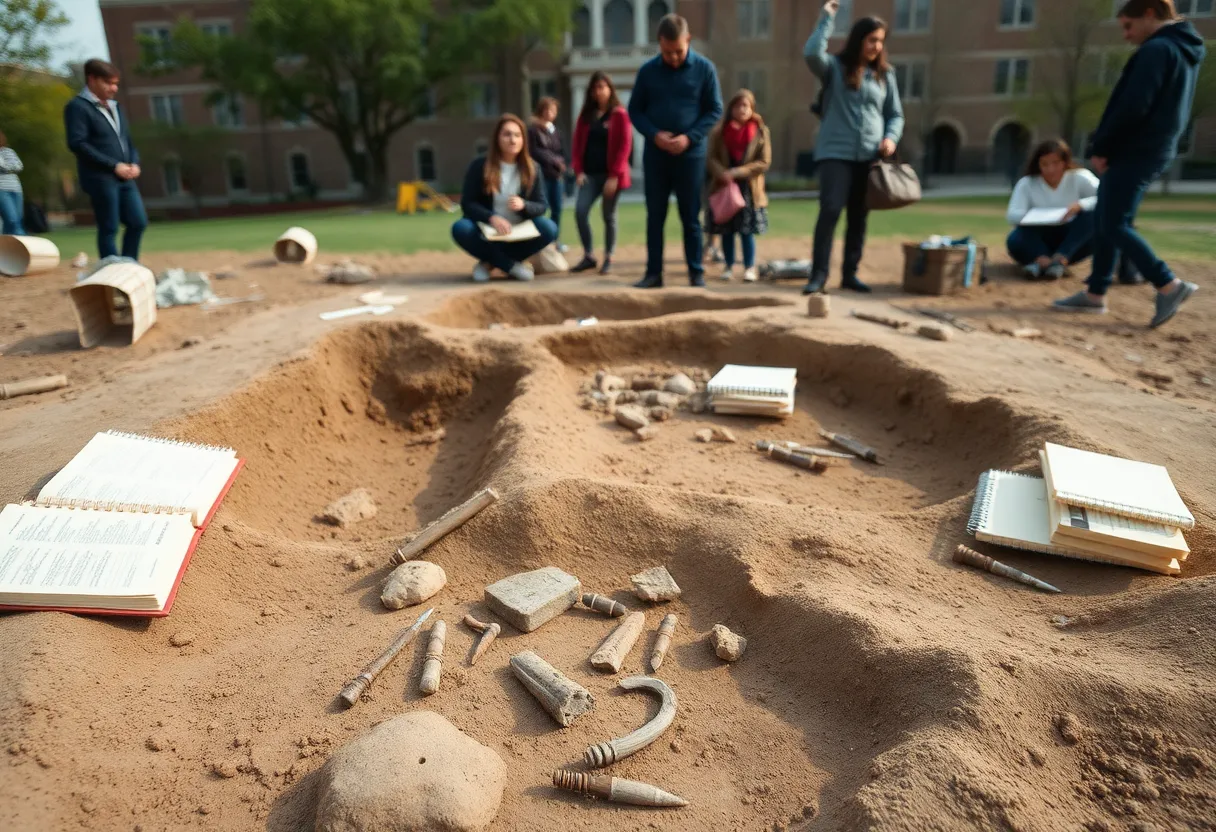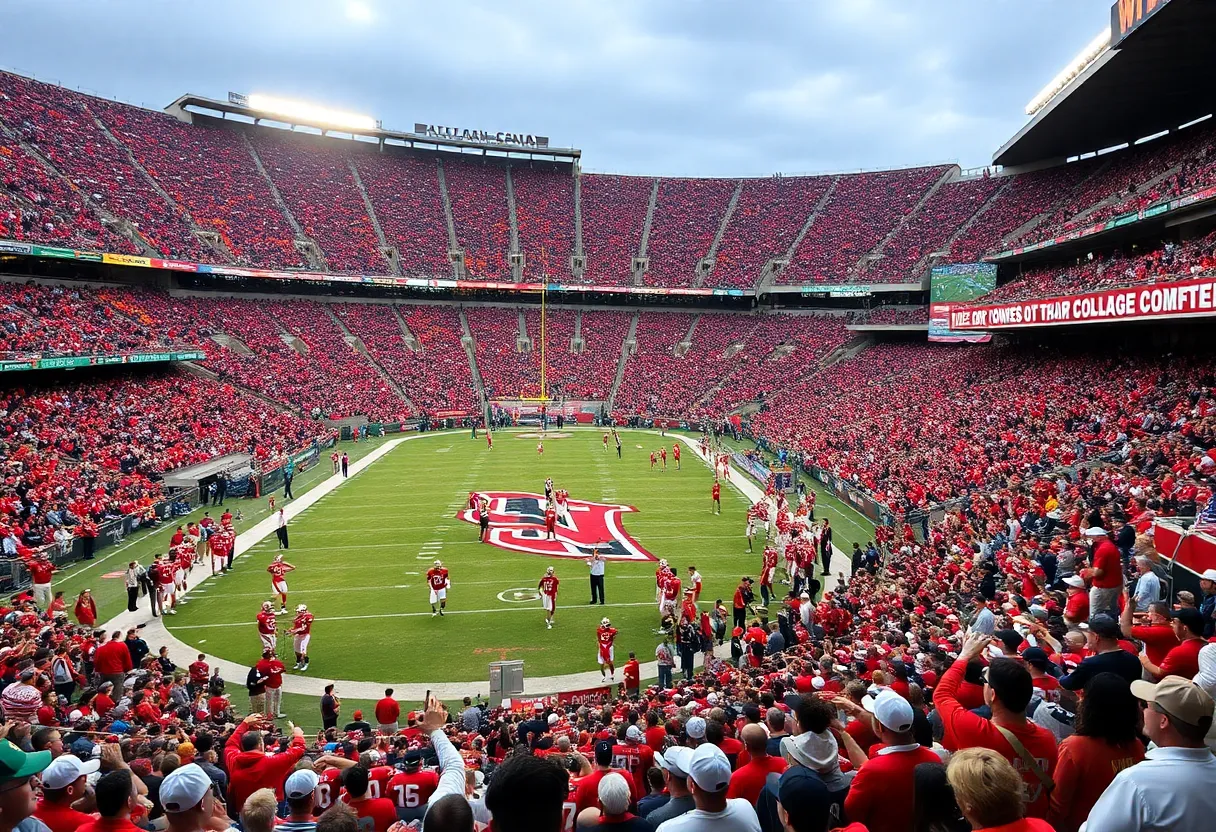Oklahoma City, October 4, 2025
An archaeological dig at the University of Central Oklahoma has revealed valuable artifacts from the 19th-century Land Rush era, including tools and settler journals. Led by Dr. Marcus Hale, the excavation involved students and uncovered insights into the challenges faced by pioneers. The findings highlight the importance of preserving local history and are set to be displayed in a new history museum on campus, fostering community engagement and education.
Major Archaeological Dig at University of Central Oklahoma Uncovers 19th-Century Land Rush Artifacts
Oklahoma City Discovery Highlights Pioneer Challenges
In Oklahoma City, a significant archaeological excavation at the University of Central Oklahoma has unearthed artifacts from the 19th-century Land Rush era, including tools and settler journals. This discovery provides fresh insights into the struggles of early pioneers in Oklahoma’s history. The dig, located directly on campus grounds, was led by UCO anthropology professor Dr. Marcus Hale, marking a key moment for historical research in the region.
Excavation Details and Key Findings
The excavation focused on areas of the university campus believed to hold remnants of early settlement activity from the late 1800s. Teams uncovered a variety of items that illustrate daily life during the Land Rush period, when thousands rushed into unassigned Oklahoma territories to claim land. Among the findings were practical tools used for farming and building, as well as personal journals written by settlers. These journals offer personal accounts of the hardships faced, such as harsh weather, resource scarcity, and the rapid transformation of the landscape.
Dr. Hale’s leadership emphasized the importance of student involvement, with numerous undergraduates and graduates participating in the hands-on digging and analysis. The process followed standard archaeological methods to ensure the preservation of fragile items. The findings have already begun to reshape local understanding of how settlers adapted to the Oklahoma Territory’s environment during this tumultuous time.
Public Presentation and Community Engagement
Students who contributed to the dig shared their discoveries during a public seminar held at the university. The event attracted local historians and community members interested in Oklahoma’s past. Presentations covered the cataloging of artifacts, preliminary interpretations of the journals, and the broader implications for historical education. This outreach effort underscores the university’s commitment to making research accessible beyond academic circles.
Historical Context of the Land Rush Era
The Land Rush of 1889 was a pivotal event in Oklahoma’s development, drawing over 50,000 participants to stake claims on newly opened federal lands. This period, part of the broader westward expansion in the United States, brought both opportunity and conflict as diverse groups of settlers, including farmers, families, and entrepreneurs, navigated uncharted territories. The artifacts from the UCO dig connect directly to this era, offering tangible evidence of the pioneer experience.
Prior to this excavation, much of the historical record relied on written accounts and photographs, but physical items like these tools and journals add a layer of authenticity. They reveal practical aspects, such as the types of implements needed for survival and the personal reflections that captured the era’s uncertainties. Historians note that such discoveries help fill gaps in narratives about underrepresented voices from the time.
Educational Impact and Future Display
The University of Central Oklahoma plans to integrate these artifacts into its new history museum, set to open on campus. This addition will serve as an educational hub, allowing visitors to explore Oklahoma’s heritage through interactive exhibits and guided tours. The museum aims to enhance resources for students, researchers, and the public, fostering a deeper appreciation for the state’s formative years.
By preserving and displaying the findings, the university ensures that future generations can learn from the challenges and resilience of early settlers. The project also highlights the role of academic institutions in preserving cultural heritage, combining fieldwork with community education. As analysis continues, more details from the journals may emerge, potentially influencing regional historical studies.
This dig represents a collaboration between anthropology, history, and community stakeholders, reinforcing the value of on-site research at educational institutions. The artifacts not only document the past but also inspire ongoing dialogue about Oklahoma’s evolution from frontier territory to modern state.
Broader Implications for Oklahoma History
Oklahoma’s history is deeply intertwined with events like the Land Rush, which shaped its demographic and economic landscape. Discoveries such as these at UCO provide a localized perspective, contrasting with larger national narratives. They emphasize the human element behind historical events, showing how individuals coped with displacement and opportunity in equal measure.
The excavation’s success has sparked interest in similar projects across the state, potentially leading to more digs in areas with untapped historical potential. For students, the experience builds skills in archaeology and critical thinking, preparing them for careers in heritage preservation. Overall, this find enriches the educational fabric of the University of Central Oklahoma and contributes to a more complete picture of the region’s past.
With the artifacts now in conservation, anticipation builds for their public unveiling. This development promises to draw attention to Oklahoma City’s role in safeguarding its history for ongoing study and reflection.
FAQ
Frequently Asked Questions
- What was uncovered in the archaeological dig at the University of Central Oklahoma?
- Artifacts from the 19th-century Land Rush era, including tools and settler journals.
- Where did the excavation take place?
- The excavation took place on campus grounds at the University of Central Oklahoma in Oklahoma City.
- Who led the archaeological dig?
- The excavation was led by UCO anthropology professor Dr. Marcus Hale.
- What insights do the findings provide?
- The findings help understand the challenges faced by pioneers.
- How were the discoveries shared with the public?
- Students involved in the project presented their discoveries at a public seminar.
- What will happen to the artifacts?
- The university will display the artifacts in its new history museum.
Key Features of the Archaeological Dig
The following table outlines the main aspects of the discovery at the University of Central Oklahoma.
| Feature | Description |
|---|---|
| Location | Oklahoma City, University of Central Oklahoma campus grounds |
| Era | 19th-century Land Rush era |
| Artifacts Found | Tools and settler journals |
| Lead Researcher | UCO anthropology professor Dr. Marcus Hale |
| Insights Provided | Understanding challenges faced by pioneers |
| Public Engagement | Student presentations at a public seminar |
| Future Display | New history museum at the university |





